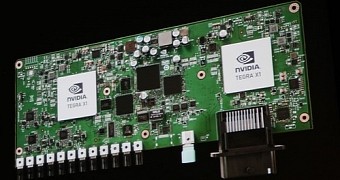Self-driving cars are being more and more talked about, with relevant authorities expecting them to become a thing, so to speak, even before 2020 comes around. NVIDIA has just given us reason to think this might actually happen.
Just a short time ago we brought you the Tegra X1, an 8-core system-on-chip device with Maxwell graphics built on the 20nm manufacturing process.
We also mentioned that NVIDIA was going to use it as the foundation for a new smart car program, employing it in a smart vehicle platform. It is that platform that we'll be looking at now.
NVIDIA Drive PX
You'll be excused if you initially think the device is a dual-GPU video card. While the distinct lack of a PCI Express pinout is hint enough that it's not a video board you're seeing, it's not enough to expose its true nature on its own.
NVIDIA deliberately laid out its plans clearly though. From what we can tell, it doesn't expect Tegra X1 to be such a big hit with smartphones and tablets anymore.
Oh, the SoC is more than good enough for the job, but that's also what backfired for the Tegra series last year and the year before: it was overpowered so tablet makers went with Samsung Exynos and Qualcomm Snapdragon instead.
Cars will be a great outlet for NVIDIA's ARM-based technology though, because they need a lot of processing power if they're going to drive themselves and provide you with entertainment and feedback at the same time.
The specs of the Drive PX platform
With each Tegra X1 having over 1 TFLOP of power, that means that the Drive PX should have at least double. Which it does.
It might seem redundant to say as much, but it really isn't. While the comparison isn't ideal, dual-GPU graphics cards (and SLI setups of two boards for that matter) don't actually provide twice the graphics prowess. More like 50-75% boost.
Fortunately, SoCs are as much CPUs as they are GPUs. Between that and NVIDIA's determination to make the best of what will probably be the only Maxwell application more advanced than 28nm, the Drive PX processes 2.3 TERAFLOPS.
Practical applications
To use the Drive PX in a self-driving car, vehicle makers will need to install 12 camera inputs around the car frame, each with a processing power of 1.3 Gigapixels per second.
The Maxwell GPU, with its 256 CUDA cores, will recognize the images, while the ARM processor cores will decide how to respond to the feed.
Drive PX will even notice traffic cameras and other cars on the road, as well as pedestrians, crosswalk signs, etc.

 14 DAY TRIAL //
14 DAY TRIAL //